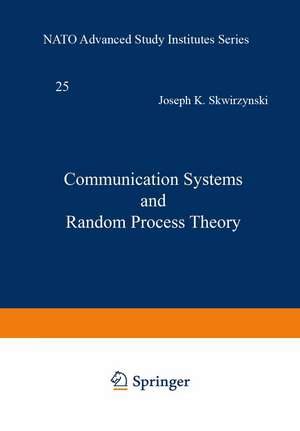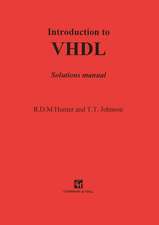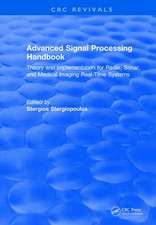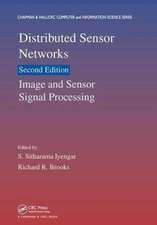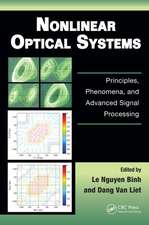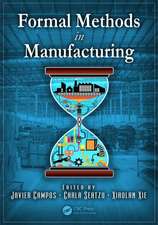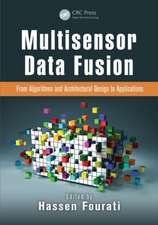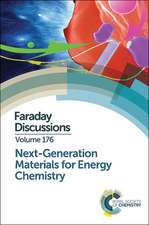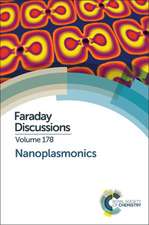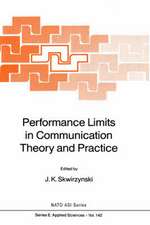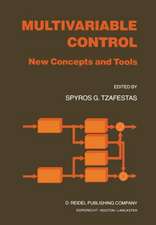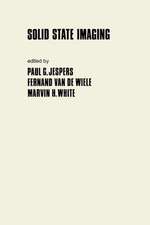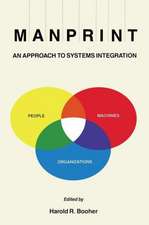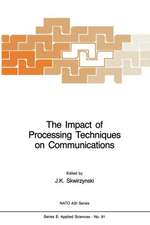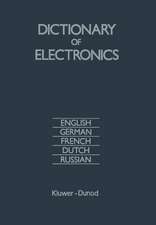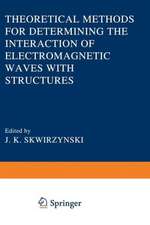Communication Systems and Random Process Theory: NATO Science Series E:, cartea 25
Autor J.K. Skwirzynskien Limba Engleză Paperback – 14 mar 2012
Din seria NATO Science Series E:
- 24%
 Preț: 1570.70 lei
Preț: 1570.70 lei -
 Preț: 397.76 lei
Preț: 397.76 lei -
 Preț: 386.81 lei
Preț: 386.81 lei - 20%
 Preț: 346.24 lei
Preț: 346.24 lei -
 Preț: 424.33 lei
Preț: 424.33 lei - 18%
 Preț: 1224.18 lei
Preț: 1224.18 lei - 18%
 Preț: 1836.63 lei
Preț: 1836.63 lei - 18%
 Preț: 1229.28 lei
Preț: 1229.28 lei -
 Preț: 381.00 lei
Preț: 381.00 lei -
 Preț: 409.30 lei
Preț: 409.30 lei - 18%
 Preț: 1841.36 lei
Preț: 1841.36 lei - 5%
 Preț: 367.28 lei
Preț: 367.28 lei -
 Preț: 407.19 lei
Preț: 407.19 lei - 18%
 Preț: 1838.38 lei
Preț: 1838.38 lei -
 Preț: 420.28 lei
Preț: 420.28 lei -
 Preț: 399.29 lei
Preț: 399.29 lei -
 Preț: 398.74 lei
Preț: 398.74 lei - 18%
 Preț: 3026.13 lei
Preț: 3026.13 lei -
 Preț: 388.90 lei
Preț: 388.90 lei - 5%
 Preț: 391.06 lei
Preț: 391.06 lei - 18%
 Preț: 1228.62 lei
Preț: 1228.62 lei - 18%
 Preț: 1229.73 lei
Preț: 1229.73 lei - 18%
 Preț: 1234.46 lei
Preț: 1234.46 lei - 5%
 Preț: 3532.05 lei
Preț: 3532.05 lei - 18%
 Preț: 1840.11 lei
Preț: 1840.11 lei - 5%
 Preț: 378.80 lei
Preț: 378.80 lei - 18%
 Preț: 1227.84 lei
Preț: 1227.84 lei -
 Preț: 392.75 lei
Preț: 392.75 lei -
 Preț: 395.63 lei
Preț: 395.63 lei - 18%
 Preț: 2489.30 lei
Preț: 2489.30 lei - 5%
 Preț: 1429.27 lei
Preț: 1429.27 lei -
 Preț: 396.02 lei
Preț: 396.02 lei - 5%
 Preț: 2142.61 lei
Preț: 2142.61 lei - 18%
 Preț: 3049.16 lei
Preț: 3049.16 lei - 18%
 Preț: 1844.54 lei
Preț: 1844.54 lei -
 Preț: 403.53 lei
Preț: 403.53 lei
Preț: 436.25 lei
Nou
Puncte Express: 654
Preț estimativ în valută:
83.48€ • 87.78$ • 68.98£
83.48€ • 87.78$ • 68.98£
Carte tipărită la comandă
Livrare economică 17 aprilie-01 mai
Preluare comenzi: 021 569.72.76
Specificații
ISBN-13: 9789401175791
ISBN-10: 9401175799
Pagini: 996
Ilustrații: 1004 p.
Dimensiuni: 170 x 244 x 52 mm
Greutate: 1.55 kg
Ediția:Softcover reprint of the original 1st ed. 1978
Editura: SPRINGER NETHERLANDS
Colecția Springer
Seria NATO Science Series E:
Locul publicării:Dordrecht, Netherlands
ISBN-10: 9401175799
Pagini: 996
Ilustrații: 1004 p.
Dimensiuni: 170 x 244 x 52 mm
Greutate: 1.55 kg
Ediția:Softcover reprint of the original 1st ed. 1978
Editura: SPRINGER NETHERLANDS
Colecția Springer
Seria NATO Science Series E:
Locul publicării:Dordrecht, Netherlands
Public țintă
ResearchCuprins
I. Some Aspects of Data Communication.- 1. Stochastic problems of multiple communication.- 2. Multi-user communication networks.- 3. Spread spectrum signals and bandwidth utilization.- 4. Extension of an adaptive distributed routing algorithm to mixed media networks.- II. Multiple Communication.- 1. From theory to practice: Advances in communications discussed at Eurocon ‘77 in Venice.- 2. The Optimum transmission signal for digital transmission systems.- 3. Timing recovery problems in data communication.- 4. Interference and jamming prone communication.- III. Algebraic Coding.- 1. Algebraic coding and combinatorics: a tutorial survey.- 2. Codes associated with finite geometries.- 3. Soft-decision minimum-distance decoding.- 4. Algebraic codes constructed from other algebraic codes: a short survey and some recent results.- IV. Probabilistic Coding.- 1. Nonprobabilistic and partly probabilistic channel coding and time varying channels.- 2. Sequential decoding for burst-error-channels.- 3. Synchronization recovery and error correcting codes.- V. Integrated Coding and Rate Distortion Theory.- 1. Joint source and channel coding.- 2. Rate distortion theory: the influences of the source and distortion measure in structuring source coding.- 3. Convolutional-codes for integrated coding.- 4. Robust low bit rate voice encoding.- 5. Integrated data communication systems with data compression and error correcting codes.- 6. Source encoding with Kaiman filters.- Panel Discussion, The practicality of source coding.- VI. Dispersive and Fading Channels.- 1. Review of methods for description of random transmission channels: applications to identification and optimisation of detection and transmission processes.- 2. Performance capabilities of the Viterbi algorithm for combattingintersymbol interference on fading multipath channels.- 3. Channel evaluation techniques for dispersive communications paths.- 4. Some results in simultaneous detection and estimation.- 5. Phase compensation receivers for optical communication.- 6. Modelling of the sea surface scattering channel and undersea communications.- Panel Discussion, Channel statistics and models.- VII. Non-Stationary and Non-Gaussian Signal/Noise Analysis.- 1. Representation of bivariate distributions with applications.- 2. Simulation of signal and noise in a nonlinear channel.- 3. Digital transmission over nonlinear channels: a Volterra series analysis.- 4. The output signal and noise from a bandpass nonlinearity involving AM-to-PM conversion.- 5. Moment space error bounds in digital communication systems.- 6. Modelling and analysis of impulsive noise.- VIII. Adaptive Signal Processing.- 1. Adaptive signal processing for detection and communication.- 2. Adaptive filters.- Panel Discussion, Adaptive filtering for high-speed modems.- IX. Stochastic Calculus.- 1. Martingale integrals and stochastic calculus.- 2. Detection, mutual information and feedback encoding: applications of stochastic calculus.- 3. The design of robust approximations to the stochastic differential equations of nonlinear filtering.- 4. A view at stochastic calculus for point processes.- Panel Discussion, “Are Ito calculus and Martingale theory useful in practice?”.- X. Signal Processing Applications of Stochastic Calculus.- 1. A Martingale approach to random fields.- 2. Jumps processes in filtering and detection.- 3. Applications of stochastic calculus for point process models arising in optical communication.- 4. Statistical modelling and analysis for adaptive routing in computer networks.- XI. The Shape TechnicalCentre Session.- 1. Introduction: Research activities on communications at the SHAPE Technical Centre.- 2. Code division multiplexing for satellite systems.- 3. The potential of meteor-burst communications with particular reference to the COMET system.- 4. New HF data transmission techniques.- 5. Speech processing for low data rate digital voice communications.- 6. Characterization of troposcatter channels for digital transmission.- List of Lecturers and Delegates.
